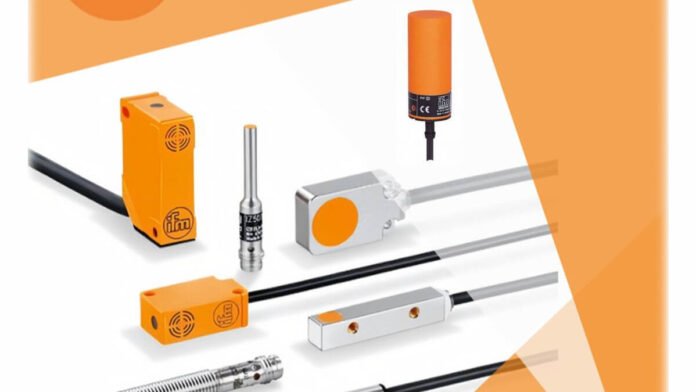An inductor is a device that enables electrical energy transfer to become more efficient by creating a magnetic field. When current flows through an inductor, it generates a magnetic field that opposes the change in the voltage. This can be thought of as applying an electromotive force across a resistor.
The working principle of the inductor sensor was derived from electromagnetic induction with properties similar to the sensor and resonances. This type of sensor converts energy generated into electrical power when current flows through an inductive coil and induces voltage to generate electromagnetic fields at one point on the coil, which corresponds with energy generation at another point. This is the main working principle of an inductive sensor.
An alternating current providing power is induced in a coil to make an inductive sensor. This type of current flow generates a magnetic field, which opposes the change in voltage, and this is the “mechanism” to convert power into electrical energy.
For example, when an alternating current flows through a coil with 20 turns with guide wire embedded in it, there will be some induced voltage between two points on the magnetic core of small diameter (about 1 mm), and the induced voltage will increase by increasing number of turns on the small core.
This induced voltage across a small core is proportional to the number of turns and changes depending on the position of the guide wire. When the voltage crosses a certain value, or after it passes through the maximum, it returns below a certain value. Suppose the coil is connected to an oscillator circuit by a guide wire, and the oscillation frequency is increased with feedback control. In that case, more voltage will be generated between two points on the magnetic core surface at a specific time. This means that power is generated for electromagnetic fields for particular areas on one surface of a small core.
What is an inductive sensor?
An inductive sensor is a sensor that senses the change in current flow through an inductor coil. It has advantages such as feeling without contact and high-speed response. This type of sensor needs several energizing cycles to generate an electromagnetic field between two points on the magnetic core surface. (Refer to the graph of induced voltage for each energizing process).
Inductive sensors come in a wide range depending on the sensing method and frequency, divided into three categories: DC inductive, AC inductive, and impulse inductive. They use different sensing methods.
How does an inductive sensor work?
Inductive sensors have the same basic structure as DC sensors. The main difference between the two is that they are not used purely for rectifying alternating current or converting it into direct current (DC). This is because of the extracting method of energy.
An inductive sensor works by using induction. In this case, an alternating current induced in a coil becomes an electromagnetic field that opposes the change in voltage, thus enabling power to be transferred from an electrical to a magnetic form during movement.
The induced magnetic field increases when an alternating current changes direction and flows toward the coil. The induced magnetic field decreases when the current changes direction back again and streams in the opposite direction. In this way, a change in voltage is detected.
When current flow through a coil (which leads to generating electromagnetic flux) is connected to a sensor circuit by a guide wire at one point, the induced voltage across it will stimulate another part of the circuit at that same position on a guide wire. This causes an oscillating semiconductor element to generate electromagnetic energy by attracting or repelling electrons according to that oscillating flux caused by induced voltage. This type of energy is called an oscillating EMF. Depending on the voltage level and the frequency of the alternating current, these oscillating EMFs are said to be either high-frequency or low-frequency. As a result, as more alternating current flows through the coil, more electromagnetic fields (oscillating EMFs) will be generated in the sensing element, and therefore more power will be generated.
Since there is no contact between electrical leads and the sensor circuit, it has a high-frequency response. This means that even if it is placed in a high-noise environment, it can still sense accurately and sensitively.
The Advantages of an inductive sensor are as follows:
- High-frequency response.
- Compact size.
- Easy to install.
No physical contact between the sensing wire and the object it detects. This minimizes surface damage and reduces noise interference from the surrounding environment. Sensitive detection of signals and resistance to interference from electromagnetic waves, such as radio waves. All-weather detection of sound, vibration, and shock with a good strength/weight ratio and low cost in production. Sensitive adjustment/readjustment by installing multiple inductive sensors at different locations. Inductive sensor circuits can be easily configured with other circuits for more accurate control or transfer of power, such as comparison circuits in combination with operational amplifiers or voltage comparators (level change), etc.
Summary of an inductive sensor:
The basic structure of an inductive sensor is identical to a DC sensor. The main difference between them is that they are not used purely for rectifying alternating current or converting it into direct current (DC). This is because of the extracting method of energy.
Its unit structure is the same as DC sensors, and it uses conventional circuit configuration, but it changes one important approach: how to extract energy from induced voltage and electromagnetic wave created through power conversion. In this case, when an alternating current induces in a coil, the generated electromagnetic field opposes the change in voltage. Thus power is converted from electrical to magnetic forms during movement. When the current changes direction again and flows in the opposite direction, an opposite magnetic field occurs.
Read More:






